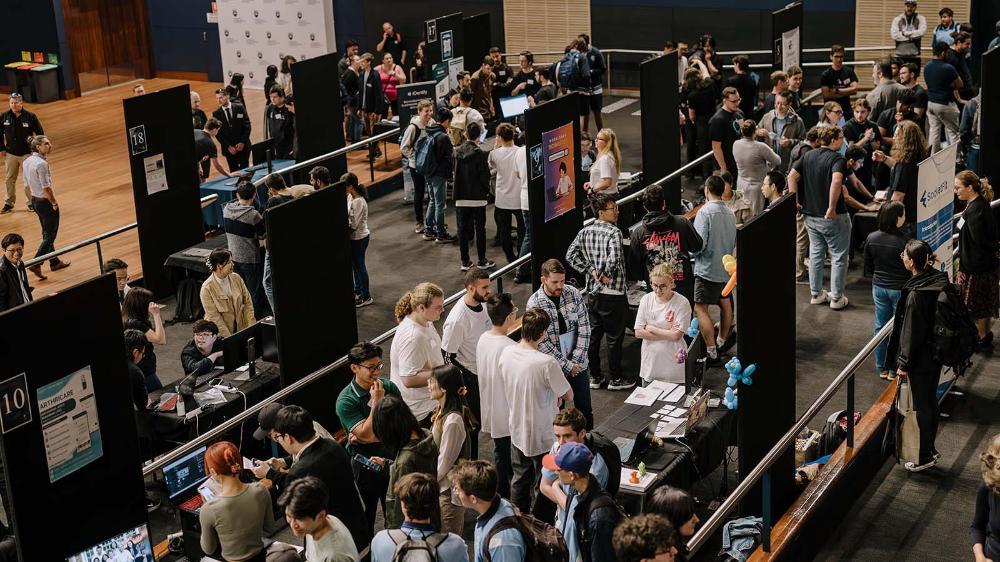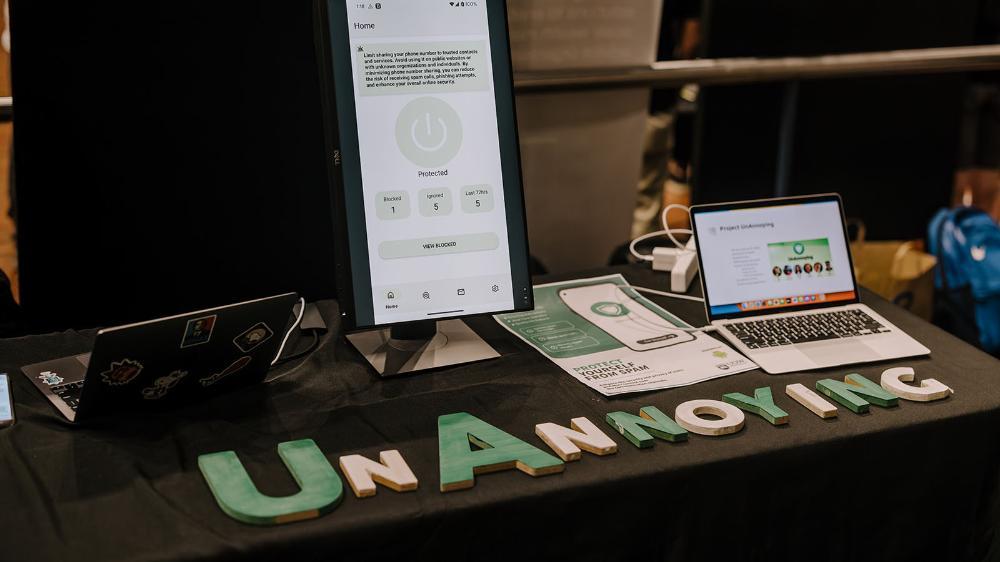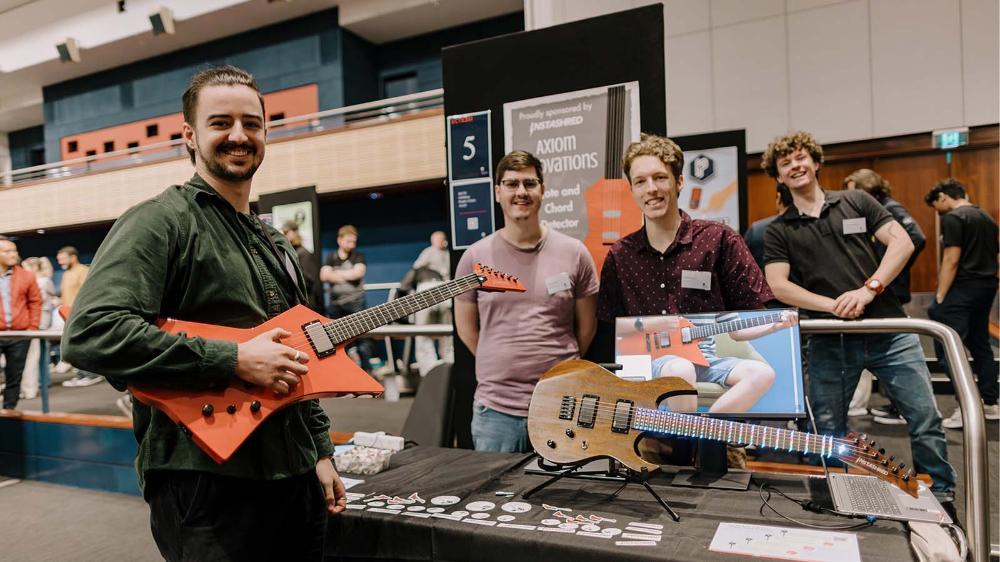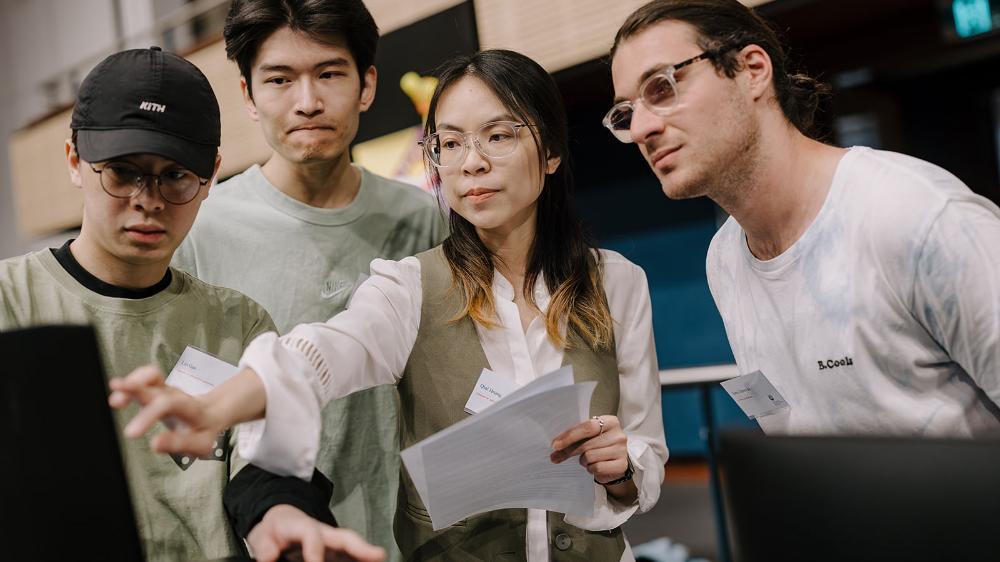October 30, 2023
Student-led innovation takes centre stage at UOW
Two large events hosted by the Faculty of Engineering and Information Sciences provided a glimpse into the future of technology
If you’ve ever wished for an invention that could make life a little bit easier, take note.
In a showcase of young talent and cutting-edge innovation, last week, the University of Wollongong’s (UOW) UniHall was abuzz with the work of the students from the Faculty of Engineering and Information Sciences (EIS).
Two consecutive events – the annual School of Computing and Information Technology (SCIT) Trade Show and the School of Electrical, Computer and Telecommunications Engineering (SECTE) Innovation Conference and Exhibition – focused on the future of software development and engineering design.

The SCIT Trade Show, which took place on Thursday 26 October, was a platform for final-year students majoring in Computer Science and Information Technology to showcase their software development projects. The magic of this event lay in its connection to the real world. Students had to work closely with industry clients and supervisors, tackling real-life Information and Communication Technologies (ICT) problems and developing cost-efficient, innovative and scalable solutions.
SCIT Senior Lecturer Dr Mark Freeman said the projects have encouraged students to step into a bright career future as Australia’s next generation of innovators.
“Our students would identify the needs of their industry partners and work collaboratively with their peers and supervisors to deliver design-driven technology that is innovative and intuitive to use,” Dr Freeman said.
Some of the inspiring SCIT student projects include PetCarer, a user-friendly mobile app that connects pet owners with pet sitters while allowing pet lovers to become pet carers. Another, aptly named Unannoying, is an intuitive mobile application that educates users about security threats, such as phishing emails, calls and texts, and ways to block them.

The SECTE Innovation Conference and Exhibition, held on Friday 27 October, focused on engineering design solutions.
Associate Professor Raad Raad, Head of SECTE, said he was proud of the students for their hard work on these projects.
“During the year, our students work in teams to learn all four phases of the product design cycle, from concept, design and funding to manufacturing. This exercise not only nurtures outstanding projects but teaches the students management concepts, social and ethical considerations, psychology and ergonomics, as well as engineering test methodology. Then, we showcase their solutions during an annual exhibition, intending to integrate entrepreneurship and innovation into our University programs,” Associate Professor Raad said.

One such project from SECTE students, named Poseidon and created with support from a data management company Ontoto, is a water depth telemetry base station, equipped with capacitive sensors that monitor water levels in remote and rural settings.
As its designers say, this innovative device is useful for early flooding alerts, boasts a five-year application lifespan and can record and transmit various environmental data. Poseidon has also been designed to be retrofitted into existing council infrastructure or used as a standalone device, making it versatile for both government and private sectors.
Another highlight from SECTE was NOEM – a smart sprinkler controller. As a water-saving measure, this sustainable device was designed to be retrofitted to pre-existing residential sprinkler systems, automating the process of watering the garden while controlling water usage.
